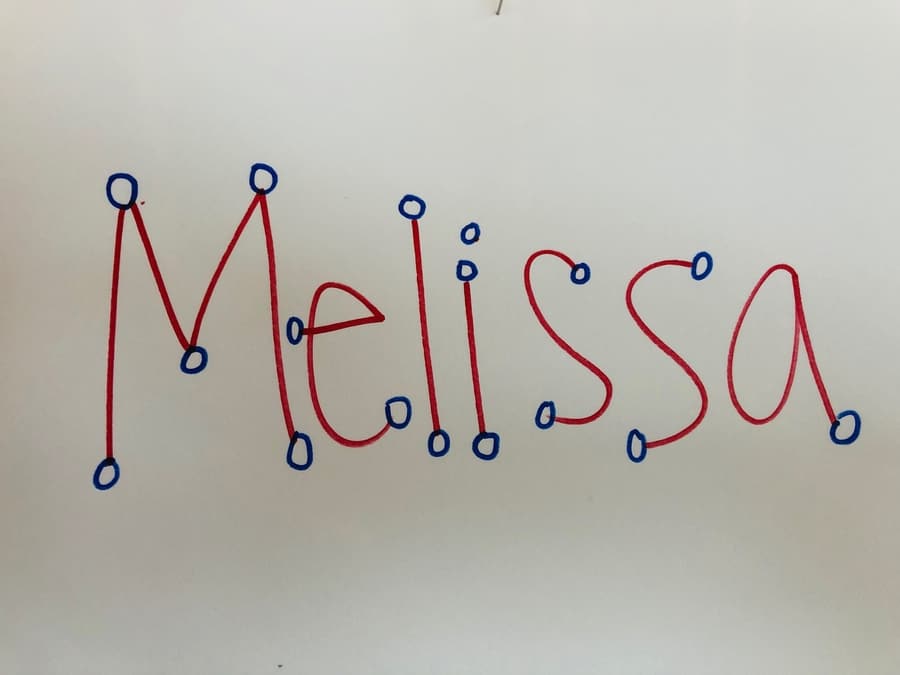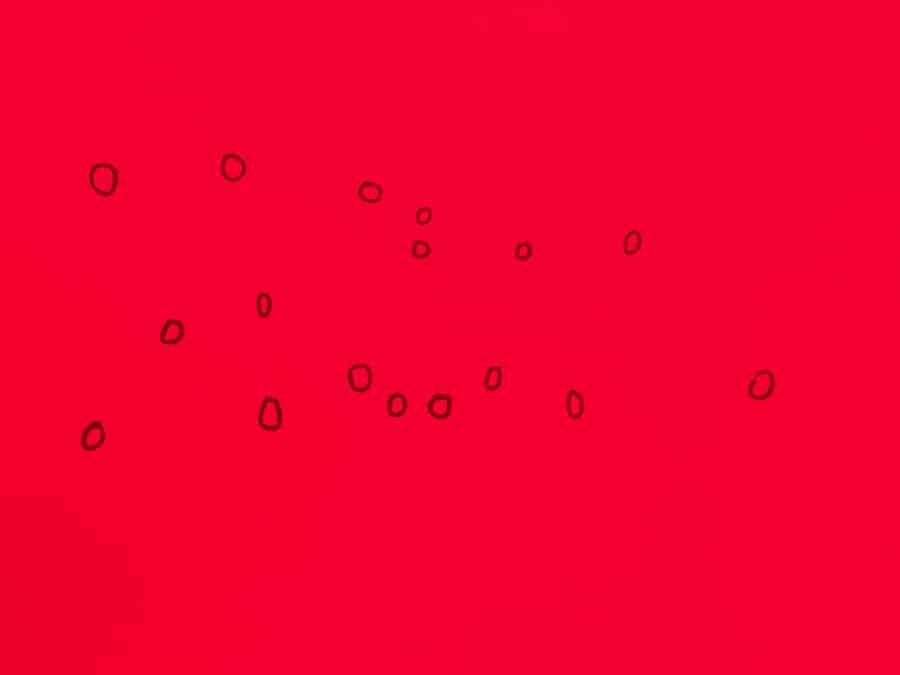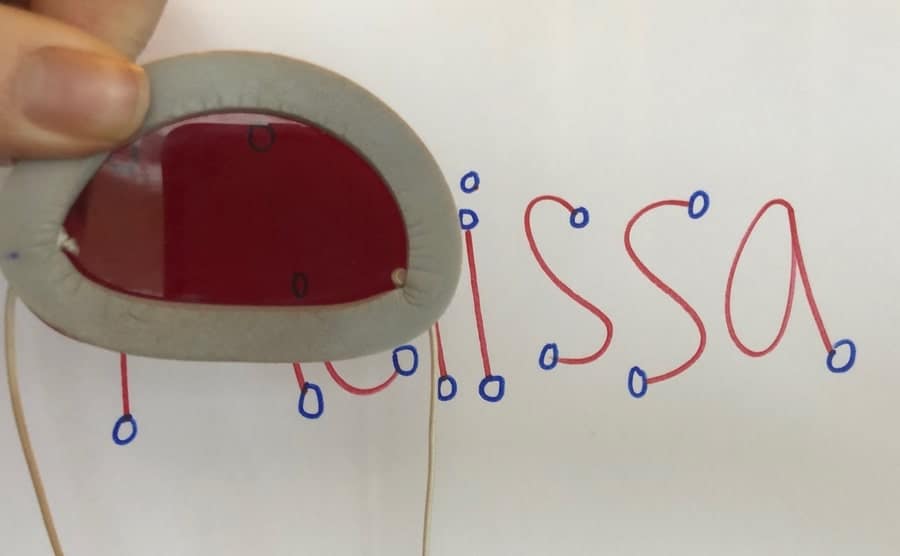After my initial consultation for Vision Therapy, I was sent home with a red lens patch, also called a filter. I was thrilled to have something new to add to my home exercises to strengthen my lazy eye and immediately had to learn everything there is to know about what they are, and how they work.

My first question, what is red lens therapy? Red lens therapy is an anti-suppression treatment that is designed for vision patients who do not have binocular vision and one eye that is stronger than the other. The patient covers the strong eye with a patch that has a red lens. This forces the weak eye to become engaged when presented with anything red; crayons, pencils, balls, puzzles, etc. Because the strong eye is still active, binocular vision is improved.
Red lens patching combines two great therapies, patching and binocular training, which increases overall results, what’s not to love? It’s time to dive in to how and why it is so amazing.
How Does a Red Lens Patch Work?
The first time the Optometrist tried to explain how the red lens patch worked, I had no clue what he was talking about. It wasn’t until he took me into a room, had me wear the patch and write my name with a red marker on a white board, that I fully understood the awesomeness.
I felt my weak eye take over and focus on the red letters in my name, while my strong eye, mysteriously, couldn’t see what I was writing at all. It was like the letters disappeared for my eye that was wearing the patch.
My brain would switch back and forth from using my left eye, to the right, to the left trying to make sense of this anomaly. It finally settled on the weaker eye, because that was the one that could see what I was writing.
How does the red lens make everything red disappear???


My strong eye was covered by a red lens. The red lens makes everything have a red tint. Have you ever tried on color tinted sunglasses? Many things loose their color and become a shade of gray, but anything white becomes red.
When I used the red marker on the white board while wearing the patch, the white board turned red. The patch didn’t make the red line disappear. It made everything around the red line turn red and match in color so that the lines were disguised and I was unable to see my name.
In the pictures below, you can see that the red letters disappear, but the blue circles can still be seen when the patch is covering all or a portion of the words. Fascinating, right?

The idea with this type of Vision Therapy is to find items that “cancel” when seen through the red patch. The only things that fully cancel for me are red, yellow, pink and orange items on a white background.
In order for my weaker eye to “take over” I needed it to fully cancel for the first couple weeks. Later on, I was able to add in more varied backgrounds as my weak eye became stronger.
The red lens patch will not work or provide any benefit if you continue to just use your dominant eye. If everything looks red, you are using your dominant eye. You want to see everything in “normal” color.
The red lens patch allows your brain to get feedback about which eye is being used. The more time you spend doing this therapy, the more you will come to understand how to control your eyes and eventually teach them to work together.
Who Can Benefit from using a Red Lens Patch?
This type of vision therapy is clinically known as a binocular approach to treating amblyopia using antisuppression therapy. Antisuppression therapy is designed to retrain the brain to use both eyes instead of suppressing or ignoring one of them.
Red lens therapy can be potentially effective for anyone who experiences visual suppression. Suppression is when the brain only takes input from one eye and ignores the other. There are varying levels of suppression, you should definitely see a Developmental Optometrist to see if you need this therapy.
When treating amblyopia or strabismus there is a long process involved. In many cases the patient must go from horrible vision in one eye to using both eyes simultaneously.
No matter how many youtube videos you see about that “one trick that will fix your lazy eye!” you need to realize that this is definitely not going to be a “one trick” process.
The first step for many people with amblyopia is to use a fully occlusive patch. This is imperative in strengthening the weak eye and giving it a chance to catch up to the strong eye in terms of tracking, focus, acuity and just teaching your brain to use that eye.
For many, once the patch is removed, the strong eye immediately takes over and the weak eye goes back to being a passive bystander in vision.
After the weak eye starts to become stronger, it is important to teach the eyes to work together. This is where the red lens patch comes in.
The red lens patch is a great intermediate step between monocular therapy (one eye at a time) and binocular training (two eyes at a time).
It falls into the “monocular fixation in a binocular field” or MFBF type of vision therapy. This type of therapy just means that both eyes are open, but by using a red lens patch or anaglyph glasses (red/green glasses), only one eye works at a time. It is a great stepping stone from patching, to binocular therapy which can lead to stereopsis.
How Long Should I use the Patch Each Day?
If you go to a consultation with a vision therapist they will be able to diagnose your specific condition and the steps you need to be taking to take your vision to its full potential.
I happen to be a very curious and scientific person and I like to see proof and studies when making decisions. I may have bought a few vision therapy textbooks to verify the information I was finding online and in the Vision Therapy office. Everything says that 30 minutes each day is the ideal time for using the red lens patch.
What Should I Expect the First Time I Use the Red Lens Patch?
The first time I used the red lens patch you could say that I was a little overzealous. The doctor prescribed 30 minutes, I got carried away and went for 45 minutes that evening.
Then the next morning I did another 30 minutes and by the end I started getting super nauseous. I was nauseous and very distracted the entire day; my brain was in another world. That world felt out of whack and out of balance.
Over the course of the first week it got better. I started doing the 30 minutes (no more!) in the evening so that my brain could sleep off the ill effects of brain exercise.
After the first week everything evened out and my brain and body adjusted. I actually loved that initial shock to my system, it meant that I was doing something that was making changes and stretching my current abilities. It is hard, frustrating and painful at times, but that is part of the territory that comes with change and growth.
I love this quote, my struggles aren’t near what his were, but it still applies. I know it will be a struggle, but I choose the struggle, because that is how I will get to where I’m going.
“Change does not roll in on the wheels of inevitability, but comes through continuous struggle.”
Martin Luther King JR
Since starting the red lens patch therapy just 2 months ago, I have fine-tuned my ability to use both eyes. I can now switch between eyes at will. The image from my left eye is still clearer so my brain still defaults to that eye, but it just takes a little effort and I can switch to the other eye.
The red lens patch is amazing, it has helped to strengthen my weak eye immensely and has also helped me become aware of my eyes and sense how it feels when they move. I have a feeling that this visual awareness is going to help me get the stereo vision that I’m dreaming about!
Where Can I Get a Red Lens Patch?
The best place to get a red lens patch is right from your Developmental Optometrist, that way you know it will be an effective therapy for your condition. Some therapists sell them, mine gave it to me for free.
If you want to purchase your own, you’re out of luck. One month ago, you could buy them on amazon or at Bernell.com, but now they only allow them to be purchased by “Healthcare Professionals, Schools, and Governments.”
Mine recently broke so I’ve been experimenting on making my own. If I have a breakthrough and come up with an easy way to do it, I will make a how-to post and put it here. Update: I figured out a way to make a pretty good one for a reasonable price, here is the how-to.
Related Questions
Can I Fix My Lazy Eye at Home?
Less severe cases of lazy eye (amblyopia) can be treated at home using glasses, patching, and vision exercises to train both eyes to work together. More severe cases could require in office Vision Therapy or eye muscle surgery.
What are the Red/Green Glasses Used for in Vision Therapy?
Red/Green or red/blue glasses are called anaglyph glasses and are used by 97% of the population to view 3D images. For those with vision issues, they are used to enhance binocular vision and stereopsis. The patient plays games where half the objects are red, the other half green. This forces both eyes to be engaged and teaches them to work together.
Sorces
“Monocular fixation in a binocular field (MFBF) Cohen AH. Monocular fixation in a binocular field. J Am Optom Assoc. 1981; 52:801-806.
Optometry and Vision Science: September 2010 – Volume 87 – Issue 9 – p 697-704. ” Binocular Approach to Treating Amblyopia:Antisuppression Therapy.”
